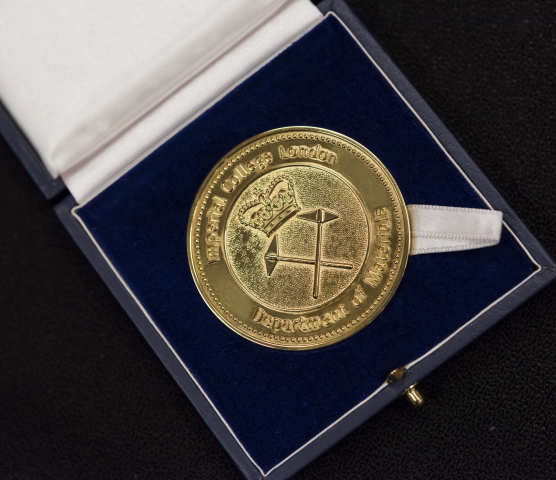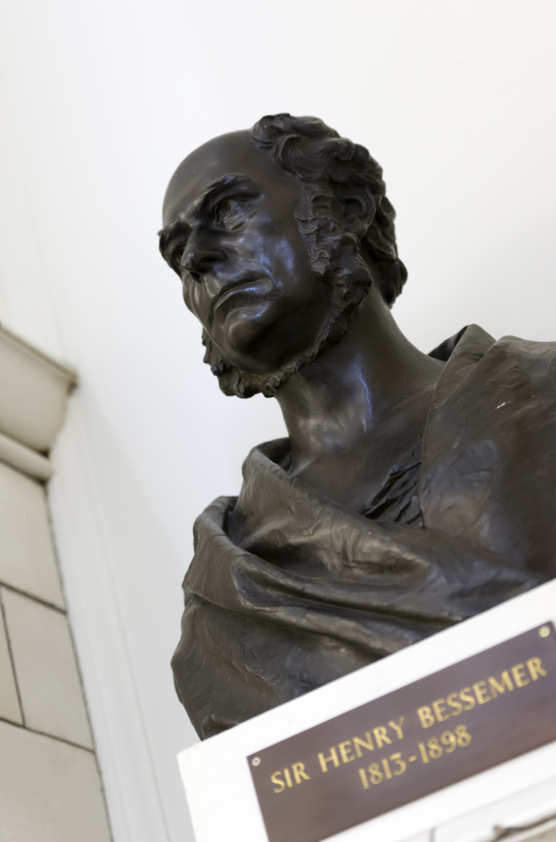 The Department has established a distinguished annual prize lecture - the “Bauerman Lecture” - named after Hilary Bauerman (one of the seven original students to enter the Government School of Mines in Jermyn Street in 1851).
The Department has established a distinguished annual prize lecture - the “Bauerman Lecture” - named after Hilary Bauerman (one of the seven original students to enter the Government School of Mines in Jermyn Street in 1851).
The lecture is intended to be the annual highlight of a series of events that bring the whole Department of Materials together around our subject as well as socially. The event is going from strength to strength attracting over 400 guests to hear the most prominent speakers in all areas of Materials Science and Engineering today.
Accordion Widget
- 2023 - Professor Samuel Stupp, Northwestern University
- 2022 - Professor Clare Grey FRS , University of Cambridge
- 2020 - Professor Nicola Spaldin, ETH Zurich
- 2019 - Professor Dierk Raabe, Max-Planck-Institut fuer Eisenforschung GmbH
- 2018 - Professor Jennifer Lewis, Harvard University
- 2017 - Professor Sir Richard Friend FRS, University of Cambridge
- 2016 - Professor Stephen Mann FRS, University of Bristol
 The Bauerman Lecture 2023, Wednesday, 15 March 2023, 16:00
The Bauerman Lecture 2023, Wednesday, 15 March 2023, 16:00
Speaker: Professor Samuel Stupp, Northwestern University
Lecture: Frontiers in Supramolecular Design of Materials
Venue: Sir Alexander Fleming Building, Lecture Theatre G16
Abstract:
The powerful functions of materials in the living world utilize supramolecular systems in which molecules self-assemble through highly specific noncovalent connections programmed by their structures. Yet, this strategy is a newcomer in materials science that, along with current computational advances, could create remarkable new materials. Our laboratory and collaborators have focused on this journey over the past three decades, aiming to exploit bio-inspired supramolecular engineering as a tool to design materials. I will discuss in my lecture three examples of functional supramolecular materials we need for our future. The first is inspired by the photosynthetic machinery of green plants, creating materials that harvest light to produce fuels for sustainable energy systems. The second example is that of life-like robotic materials that effectively transduce different types of energy into mechanical actuation and locomotion of objects. The third topic will be supramolecular biomaterials that mimic extracellular matrices and provide unprecedented bioactivity to regenerate tissues. In this example, I will discuss a recent breakthrough in the structural tuning of supramolecular motion, which surprisingly led to materials with optimized potential to reverse paralysis by repairing the brain and the spinal cord.
Biography:
Samuel I. Stupp (b. Jan. 9, 1951 in San José, Costa Rica), is a Board of Trustees Professor of Materials Science, Chemistry, and Medicine at Northwestern University in Chicago, IL. He is best known for his work on self-assembling materials and supramolecular chemistry. One of his most notable discoveries is a broad class of peptide amphiphiles that self-assemble into high aspect ratio nanofibers with extensive applications in regenerative medicine. He has also made significant contributions to the fields of supramolecular chemistry, nanotechnology, and organic electronic materials. He has over 500 peer-reviewed publications and was one of the 100 most cited chemists in the 2000-2010 decade.
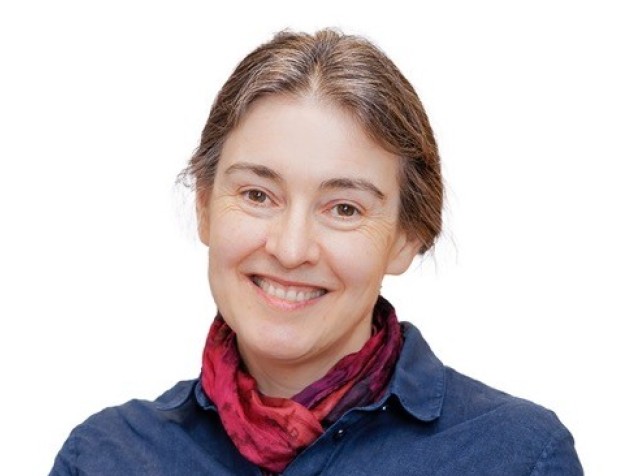 The Bauerman Lecture 2022, Wednesday, 2 March 2022, 16:00
The Bauerman Lecture 2022, Wednesday, 2 March 2022, 16:00
Speaker: Professor Clare Grey FRS, University of Cambridge.
Lecture: New ways of looking at batteries - function, failure and fast charging
Venue: Lecture Theatre 200, City and Guilds Building, Imperial College London, South Kensington Campus.
Biography: Professor Clare Grey FRS is Geoffrey Moorhouse Gibson and Royal Society Professor, Yusuf Hamied Department of Chemistry, University of Cambridge.
Professor Grey FRS received a BA and D. Phil. (1991) in Chemistry from the University of Oxford. After post-doctoral fellowships in the Netherlands and at DuPont CR&D in Wilmington, DE, she joined the faculty at Stony Brook University (SBU) in 1994. She moved to Cambridge in 2009, maintaining an adjunct position at SBU, becoming a Fellow of Pembroke College in 2011. She was the founding director of the NorthEast Center for Chemical Energy Storage, a Department of Energy, Energy Frontier Research Center.
She is currently the director of the EPSRC Centre for Advanced Materials for Integrated Energy Systems (CAM-IES) and an Expert Panel member of the Faraday Institution. Recent honours/awards include the RSC John Goodenough Award (2019), the Richard R. Ernst Prize in Magnetic Resonance (2020), the RS Hughes Award (2020) and the Körber European Science Award (2021) for her contributions to the optimization of batteries using NMR spectroscopy. She is a Fellow of the Royal Society and a foreign member of the American Academy of Arts and Sciences. Her current research interests include the use of solid-state NMR and diffraction-based methods to determine structure-function relationships in materials for energy storage (batteries and supercapacitors), conversion (fuel cells) and carbon capture. She is a co-founder of the company Nyobolt, which seeks to develop batteries for fast charge applications.
Email: cpg27@cam.ac.uk
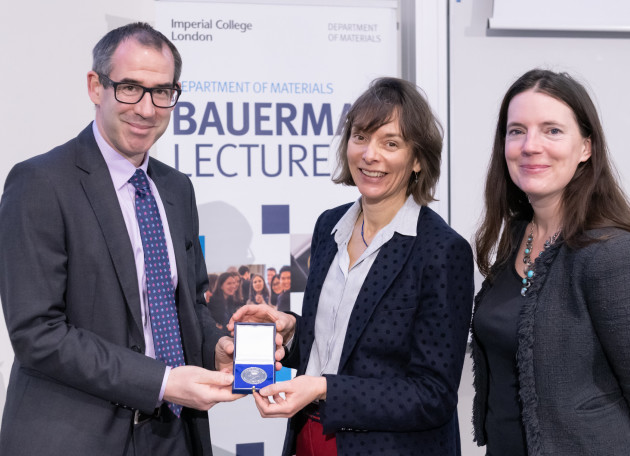 The Bauerman Lecture 2020, Wednesday, 5 February 2020, 16:00
The Bauerman Lecture 2020, Wednesday, 5 February 2020, 16:00
Speaker: Professor Nicola Spaldin, Materials Theory at ETH Zurich
Lecture: New Materials for a New Age
Venue: Lecture Theatre 200, City and Guilds Building, Imperial College London, South Kensington Campus.
Historically, every era of human civilization, from the Stone Age, through the Bronze and Iron Ages, has been defined by the material that dominated the time. The forthcoming end of today's Silicon Age, in which aspects of society as diverse as commerce, transportation and communication are underpinned by silicon-based microelectronic devices, offers, therefore, a unique opportunity -- defining the future of civilization -- and challenge -- how to maintain and improve our modern way of life -- to materials scientists. I will discuss how new materials are essential for addressing many of the world's most urgent problems, and present my favourite candidates -- the multiferroics -- for enabling beyond-silicon information technologies.
Biography: Nicola Spaldin is the Professor of Materials Theory at ETH Zurich. She developed the class of materials known as multiferroics, which combine simultaneous ferromagnetism and ferroelectricity, for which she received the American Physical Society’s McGroddy Prize, the Koerber European Science Prize, the L’Oréal-UNESCO for Women in Science award and the Swiss Science Prize Marcel-Benoist among many others. She is a passionate science educator, coordinator of the curriculum development project ‘The Materials Scientist 2030, Who is She?’, and holder of the ETH Golden Owl Award for excellence in teaching. When not trying to make a room-temperature superconductor, she can be found playing her clarinet, or skiing or climbing in the Alps.
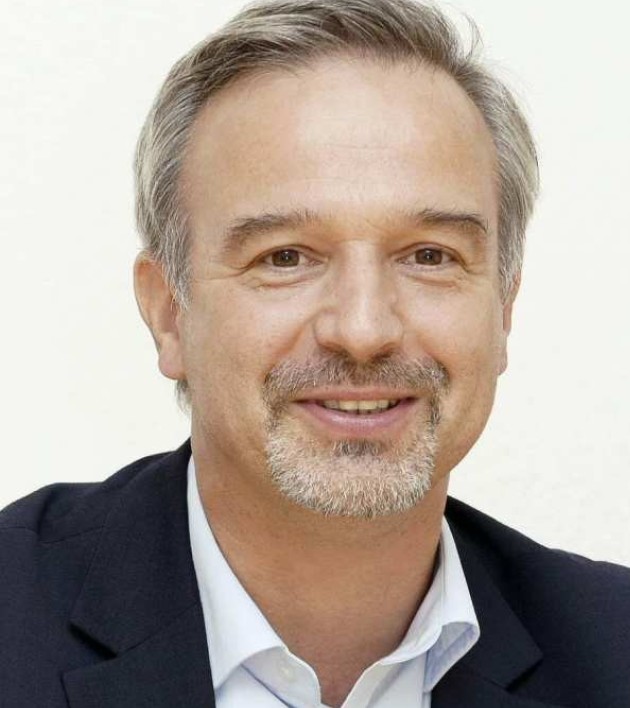 The Bauerman Lecture 2019, Thursday 28 February 2019, 16:00
The Bauerman Lecture 2019, Thursday 28 February 2019, 16:00
Speaker: Professor Dierk Raabe, Max-Planck-Institut fuer Eisenforschung GmbH.
Lecture: Compositional Lattice Defect Manipulation for Microstructure Design
Internal interfaces, stacking faults and dislocations determine many mechanical, functional, and kinetic properties of alloys. These defects can be chemically manipulated by solute decoration, confined elemental partitioning and even by low-dimensional transformation phenomena, altering their energy, mobility, structure, and cohesion. Some of these phenomena are long known: examples are Cottrell atmospheres at dislocations, Suzuki partitioning to stacking faults and grain boundary segregation according to the adsorption isotherm.
The lecture presents and discusses three aspects in that context. First, recent atomic-scale experiments show that the interplay between defect structure and chemistry can lead to a much larger variety of compositional–structural states than commonly assumed. Second, some of these states can be described by established thermodynamic and kinetic models. Third, embracing the full complexity of these defect decoration states via alloying and thermomechanical treatments establishes an approach referred to as 'segregation engineering'. In this concept defect, decoration and transformation are not regarded as undesired phenomena but instead utilised to manipulate specific interface and dislocation structures, compositions and properties for advanced microstructure design.
Venue: Lecture Theatre 200, City and Guilds Building, Imperial College London, South Kensington Campus.
Biography: Dierk Raabe studied music, metallurgy and metal physics. After his doctorate and habilitation at RWTH Aachen he worked at Carnegie Mellon University in Pittsburgh and at the High Magnetic Field Laboratory in Tallahassee. He joined the Max Planck Society as a director in 1999. He works in four fields: Design of metallic alloys; structure-property relations of complex materials; correlative atom probe tomography; Computational Materials Science. In 2004 he received the highest German research award (Leibniz-Award), holds an ERC advanced grant 2012 and received 3 best paper awards. He is a member of the National Academy Leopoldina, Professor at RWTH Aachen and Honorary Professor at the Katholieke Universiteit in Leuven.
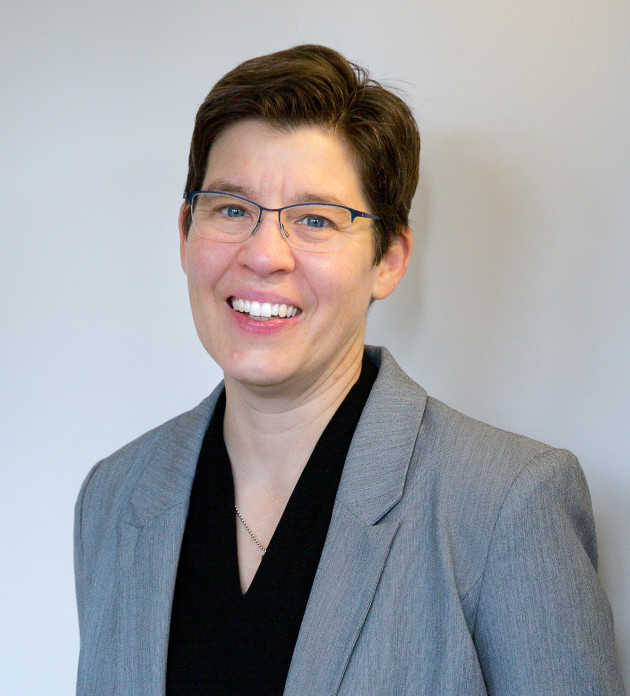 The Bauerman Lecture 2018
The Bauerman Lecture 2018
Speaker: Professor Jennifer Lewis, Harvard University.
Lecture: Digital and Self-Assembly of Vascularized Organ-Specific Tissues
Venue: Lecture Theatre 200, City and Guilds Building, Imperial College London, South Kensington Campus.
Biography: The advancement of tissue and, ultimately, organ engineering requires the ability to pattern human tissues composed of cells, extracellular matrix, and vasculature with controlled microenvironments that can be sustained over prolonged time periods. Towards this goal, we have developed a multimaterial bioprinting method capable of producing vascularized human tissues. As one illustrative example, we have created thick vascularized, stem-cell laden tissues that can be controllably perfused and differentiated along an osteogenic lineage. We have also printed 3D proximal tubules embedded in an engineered extracellular matrix with and without vasculature and characterized their structure, function, and vectorial transport. We are now integrating digital and self-assembly approaches to create more complex organ-based constructs. By combining bioprinting, stem-cell biology, and tissue-on-chip concepts, we are opening new avenues for drug screening, disease models, and ultimately tissue repair and regeneration.
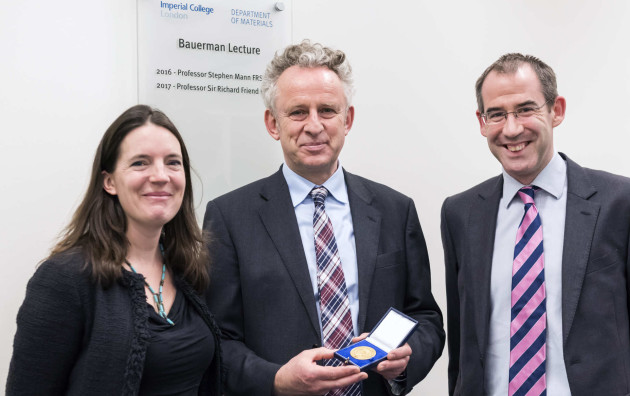 The Bauerman Lecture 2017
The Bauerman Lecture 2017
Speaker: Professor Sir Richard Friend FRS
Lecture: Electronic Excitations in Molecular Semiconductors
Venue: Lecture Theatre 200, City and Guilds Building, Imperial College London, South Kensington Campus.
Biography: Pi-conjugated organic molecules and polymers now provide a set of well-performing semiconductors that support devices, including light-emitting diodes (LEDs) as used in smart-phone displays and lighting, field-effect transistors (FETs) and photovoltaic diodes (PVs). These are attractive materials to manufacture, particularly for large-area applications where they can be processed by direct printing, so that the cost of materials and processing can be very low. This practical success is made possible by breakthroughs in the understanding and engineering of the underlying semiconductor science. The physics of organic semiconductors is often controlled by large electron-hole Coulomb interactions and by large spin exchange energies. Management of excited state spin is fundamental for efficient LED and solar cells operation. I will discuss in particular recent progress in the control of emissive spin singlet excited states and non-emissive spin triplet excited states.
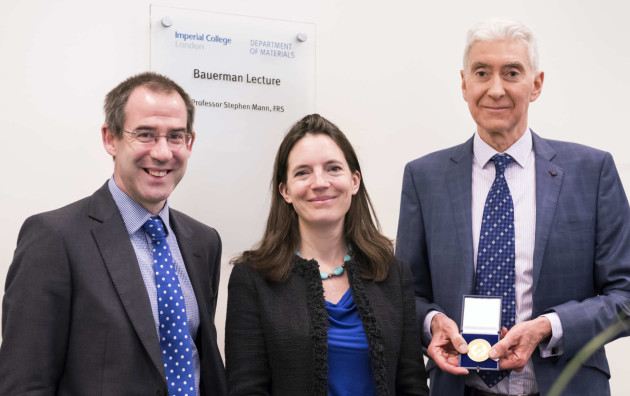 The Bauerman Lecture 2016
The Bauerman Lecture 2016
Speaker: Professor Stephen Mann FRS
Lecture: Systems of Creation: the Emergence of Life from Non-living Materials?
Venue: Lecture Theatre 200, City and Guilds Building, Imperial College London, South Kensington Campus.
Biography: Materials principles and concepts can be successfully applied to biological systems. And the engineering of biology is now self-evident. Synthetic biology is coming of age. But is this a one-way street? Can the principles of life be applied to physical materials? Not simply as biomimetics or bioinspiration, but at a deeper conceptual level: is there such a thing as
life outside biology?
This talk will highlight recent work on the design and microscale engineering of synthetic protocells as a step towards autonomous material life-forms capable of rudimentary processes such as chemical cognition, signalling, modulated reactivity, self-reproduction and collective behaviour.
CONTACT US
Department of Materials
Imperial College London
Royal School of Mines
Exhibition Road
London, SW7 2AZ - UK
